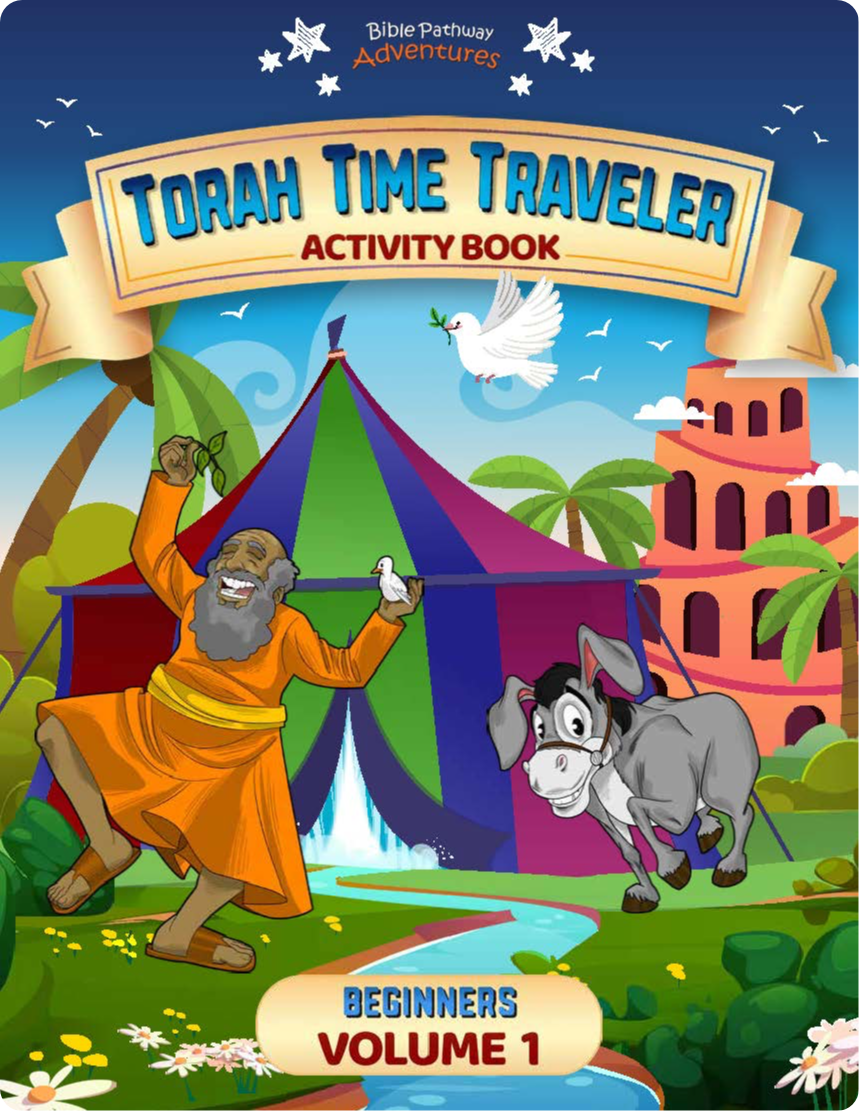Imagine stepping back in time to 1st-century Israel during the Passover!
The streets of Jerusalem were bustling with Israelites from all over the land of Israel, and even beyond, because the Passover meal and the Feast of Unleavened Bread (חַג הַמַּצּוֹת) were among Yah’s pilgrimage feasts. The men of Israel were instructed to appear before Him at the Temple in first-century Jerusalem, and they often brought their families along for this Appointed Time (Exodus 23:14-17; Deuteronomy 16:16).
Passover: Preparing for the Feast
 The preparations for Passover were a significant undertaking. Israelite families worked hard to remove every tiny crumb of chametz (leavened bread) from their homes, just as the Torah instructed (Exodus 12:15, 19-20). Why? Because this holiday wasn’t just about remembering the past—it was about living it! During Passover and the Feast of Unleavened Bread, no leaven was allowed. People ate matzah, a flat, cracker-like bread, to remember how the Israelites had to leave Egypt in such a hurry that they didn’t have time for their bread to rise (Exodus 12:39).
The preparations for Passover were a significant undertaking. Israelite families worked hard to remove every tiny crumb of chametz (leavened bread) from their homes, just as the Torah instructed (Exodus 12:15, 19-20). Why? Because this holiday wasn’t just about remembering the past—it was about living it! During Passover and the Feast of Unleavened Bread, no leaven was allowed. People ate matzah, a flat, cracker-like bread, to remember how the Israelites had to leave Egypt in such a hurry that they didn’t have time for their bread to rise (Exodus 12:39).
Meanwhile, pilgrims from the scattered House of Israel - Parthians, Medes, Elamites, and people from Mesopotamia, Judea, Cappadocia, Pontus, Asia, Phrygia, Pamphylia, Egypt, parts of Libya around Cyrene, visitors from Rome, Cretans and Arabians - packed their bags and traveled to Jerusalem. The roads were alive with singing and chatter as Israelites made their way to the city to honor this Appointed Time.
The Temple Experience
For an Israelite visiting the Temple in Jerusalem during the Feast of Unleavened Bread, the experience was unforgettable. As you approached the city, the Temple—gleaming in white stone and gold—stood majestically atop Mount Moriah. The air was filled with the sounds of prayers, singing, and the bleating of sacrificial lambs. The courtyards of the Temple were crowded with worshipers, priests, and Levites, all busy with their sacred duties.
At the Temple, you would present your lamb for the Passover sacrifice. Watching the priests in their pure white robes, performing the sacrifices with precision and reverence, was awe-inspiring. The blood of the lamb was sprinkled on the altar, a symbol of atonement and dedication to God. The smell of roasted lamb wafted through the city as families prepared their meals.
Inside the Court of Israel, you could hear the Levites singing psalms of praise, accompanied by instruments. Worshipers prayed and gave thanks, joining together as a nation to celebrate Yahweh’s deliverance and faithfulness. To discover more about how Yeshua fulfilled the Passover and His resurrection, check out our He Is Risen! Activity Book.
The Passover Lamb
On the afternoon of the 14th day of the month of Nisan, families brought a lamb to the Temple. The lamb had to be perfect, without any flaws, following God’s instructions (Exodus 12:5). After the priests performed the sacrifice, families carried the lamb home to roast it and prepare for the evening meal.
As the sun set and the 15th of Nisan began, families gathered to eat the Passover meal. It wasn’t like a regular dinner or a fancy feast—it was eaten in haste, just like the Israelites did on the night they left Egypt (Exodus 12:11). The meal included three items: roasted lamb, unleavened bread (matzah), and bitter herbs. Each food had a special meaning: the lamb symbolized God’s protection, the matzah symbolized the haste of escape, and the bitter herbs reminded them of the hardships of slavery (Exodus 12:8).
Everyone dressed as if they were ready to travel—cloak tucked into their belt, sandals on, and staff in hand—just as the Torah instructed (Exodus 12:11). Whatever remained uneaten was to be burned before dawn, ensuring no leftovers remained (Exodus 12:10).
The Feast of Unleavened Bread
Passover wasn’t just about the meal; it also marked the start of the Feast of Unleavened Bread, which lasted seven days. On the first day, a sacred gathering took place at the Temple, where men and their families worshiped God (Exodus 12:16, Leviticus 23:7). The Levites sang psalms, and special sacrifices were offered. Being in Jerusalem during this time filled you with a sense of awe and joy. Surrounded by tens of thousands of fellow Israelites, you could feel the unity of the nation as everyone came together to worship Yah and remember His mighty deliverance.





